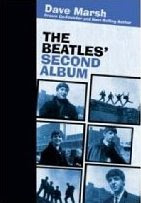 Gram Parsons in Nudie suit © Jim McCrary 1969 All Rights Reserved.
Gram Parsons in Nudie suit © Jim McCrary 1969 All Rights Reserved.
Having spent the past couple of days reading Bob Proehl’s excellent new book—published just this month—on the Flying Burrito Brothers’ classic country album THE GILDED PALACE OF SIN (1969), my thoughts have turned to the enigma of the late Gram Parsons (1946-1973), who died at the painfully young age of twenty-six of a drug overdose. In his discussion of Parsons and the Burrito Brothers, Proehl devotes a chapter to Nudie Cohen (1902-1984) and the highly individualized costumes he designed for country & western entertainers, including the Burritos. Unique and highly distinctive—“individualized”—Nudie costumes frequently served as memory aides for audiences, helping them to identify particular performers: Porter Wagoner, for instance, had suits created with wagon wheels on them, a distinctive emblem obviously derived from a wordplay on his surname. Proehl rightly notes that Gram Parsons’ famous Nudie suit (pictured, modeled by Parsons, the suit he was wearing in the picture used as the album cover for The Gilded Palace of Sin) was made by Manuel Cuevas, the most gifted protégé of Nudie Cohen. Here’s Proehl’s detailed description of Parsons’ Nudie suit:
The white coat, cut high to show off a handtooled leather belt, had large multicolored pills along the sleeves: white-crossed amphetamines, red barbiturates, and green and blue capsules to symbolize some combination of the two. Kelly green cannabis leaves snaked up the front, and bright pink poppies stood out at each shoulder. The lapels bore carefully embroidered naked women, the cartoonish renderings recalling the cover girl from Sweetheart of the Rodeo, stripped bare. The pants flared out at the bottom with bright red inserts, and flames rose up from the flares, licking at the poppies that sat at the point of each low-cut hip. But the centerpiece was the jacket’s back, emblazoned with a red cross, rays of light streaming out of it like a massive prison tattoo, a cholo cross. (27-28)
Proehl, importantly, actually quotes Manuel Cuevas about the significance of Parsons’ suit.  Cuevas made the observation many years later that Parsons’ costume “was actually a map for him to follow to his death” (28). There may be some truth to this claim. The question is, did Gram Parsons purposefully design his suit so as to announce both the manner of his death, as well as his subsequent cremation? While the omission doesn’t detract from his discussion, I’m not sure whether Bob Proehl was aware of the interview Michael Jarrett conducted with Manuel Cuevas (July 1997), in which the artist is even more explicit about the symbolic meaning of Parsons’ suit. Cuevas’ comments tend to support the uncanny speculation that Parsons was aware both of the manner of his death (drugs) and his subsequent cremation:
Cuevas made the observation many years later that Parsons’ costume “was actually a map for him to follow to his death” (28). There may be some truth to this claim. The question is, did Gram Parsons purposefully design his suit so as to announce both the manner of his death, as well as his subsequent cremation? While the omission doesn’t detract from his discussion, I’m not sure whether Bob Proehl was aware of the interview Michael Jarrett conducted with Manuel Cuevas (July 1997), in which the artist is even more explicit about the symbolic meaning of Parsons’ suit. Cuevas’ comments tend to support the uncanny speculation that Parsons was aware both of the manner of his death (drugs) and his subsequent cremation:
I never realized until way past his death that that’s what we were talking about. The fire on the cross—that’s the way he wanted to die. Although we have been friends forever, Phillip Kaufman [the Burritos’ former road manager who stole Parsons’ body from the Los Angeles airport and burned it in Joshua Tree Desert] and I hadn’t really talked about Gram, but Gram had talked to him. Phil had promised Gram that, if he died, he would burn his body. I was just making the outfit according to all the ideas that we put together: the nude girls, the pills and the marijuana plants, and the California poppies. The fire up the pants. The cross in the back. Although I captured the idea—we developed it into a great form—it wasn’t until a few years after his death that I really started thinking about it. “This boy was really telling me how he was going to die.” (63)
Despite the designer’s assertions, the question of whether Parsons inscribed the suit as a sort of unconscious death wish remains only an intriguing possibility--but it most certainly reveals the the manner in which myths are made.
Flying Burrito Brothers – The Gilded Palace of Sin (A&M)
Dolly Parton-Linda Ronstadt-Emmylou Harris – Trio (Warner Bros.)
Elvis Presley – 50,000,000 Elvis Fans Can’t Be Wrong: Elvis’ Gold Records, Volume 2 (RCA)
Hank Snow – The Essential Hank Snow (RCA)
Porter Wagoner – Big Rock Candy Mountain (Gusto)
Hank Williams – 40 Greatest Hits (Polydor)






